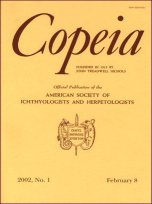Ecological data on poorly-known snake species can suggest novel hypotheses about selective forces for interspecific variation in morphological traits. The nocturnal fossorial snakes of the family Atractaspididae represent an ancient African radiation that may comprise the sister-group to other “advanced” snakes such as the Elapidae, but have attracted little ecological study despite their diverse and unusual morphology (including a unique “side-stabbing” mode of venom delivery in one lineage). Our measurement and dissection of 639 preserved specimens of six species showed that females attained similar or larger mean adult body sizes than did conspecific males in all six taxa, but males had relatively longer tails and, generally, relatively larger heads. The magnitude of sexual dimorphism varied considerably; for example, mean adult body sizes were similar in males and females for Atractaspis bibronii and Amblyodipsas ventrimaculata, but there was no overlap in adult body sizes between the sexes in Amblyodipsas polylepis. All species produced small clutches of relatively large eggs, but with significant interspecific variation in fecundity. Diets also differed, within a general pattern of specialization on elongate fossorial reptiles. Xenocalamus species mainly took amphisbaenians (at least during adult life), whereas Atractaspis, Amblyodipsas, and Macrelaps consumed a wider array of prey, especially snakes and burrowing skinks. In contrast to previous reports, we found few mammalian prey items in Atractaspis. Multiple evolutionary shifts in feeding structures (venom systems, head shapes, etc.) within this group may represent adaptations to taking fossorial prey in narrow burrows, and specifically to overcome the challenges posed by the ability of squamate prey to block burrows (and thus, impede predator pursuit) by tail autotomy.
How to translate text using browser tools
1 February 2006
Biology of Burrowing Asps (Atractaspididae) from Southern Africa
Richard Shine,
William R. Branch,
Peter S. Harlow,
Jonathan K. Webb,
Terri Shine
ACCESS THE FULL ARTICLE





